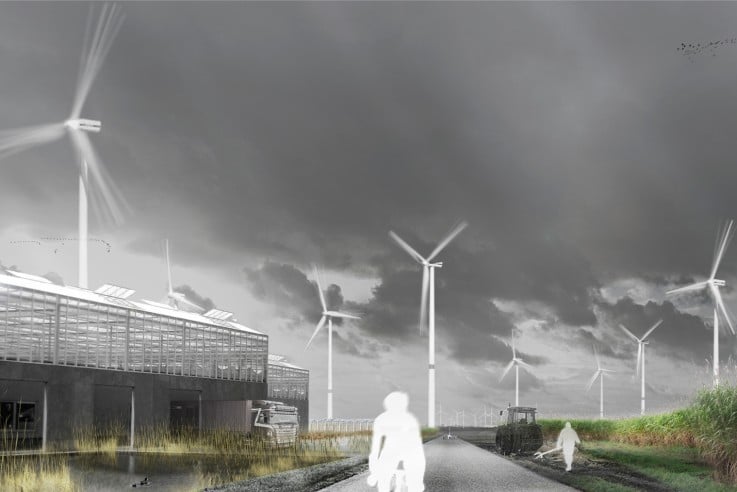Landscape architects and urban planners need to enter and participate in the world of energy. Designers are perfectly equipped to take on one of the greatest challenges of our time: the transition from fossil fuels to renewable energy.
Energy is becoming a bigger issue every day. Various recent geopolitical crises show that our current society is largely dependent on fossil fuels, making our geopolitical position ever more vulnerable. Even in our daily lives energy development is becoming more and more visible. For example, electric vehicles and associated charging stations are now rapidly redefining the image of our streets. When we open up the newspaper we see the world divided into supporters and opponents and initiators and victims of renewable energy.
The object of discussion is usually the wind turbine, but recently the visual impact of large arrays of solar panels has been added to the debate. What is striking is that this debate, which clearly has an aesthetic side to it, doesn’t really focus on design. To fit or not to fit, that seems to be the question, leaving a whole range of mediating design options out of focus. Although the landscape is, as it were, the playing field on which the battle of renewable energy is being fought, the voice of landscape architects is hardly ever heard.
Back to the energy landscape
Spatial planning is at firstFirst – Der höchste Punkt des Dachs, an dem sich die beiden Giebel treffen. sight driven by economic development. However, growth is in turn driven by a huge “engine” that constantly needs to be fuelled: our energy supply. We barely recognise this engine anymore because, especially in the last few decades, we have managed to move the main parts out of sight. Planning has thus functioned as a large “bonnet”, discreetly concealing the engine, fuel and wiring. Our daily environment has been largely freed from energy production, which is why most people simply take a steady energy supply for granted.
Unlike fossil energy, however, whose sources are more or less concentrated in certain specific places, renewable energy can be harvested almost anywhere in the landscape. We are thus on the verge of having not only a cleaner, but also a much more decentralised energy supply. And this latter point will have major spatial implications that we will have to get used to. […]
Read on in Topos 91 – Cities and Landscapes.

